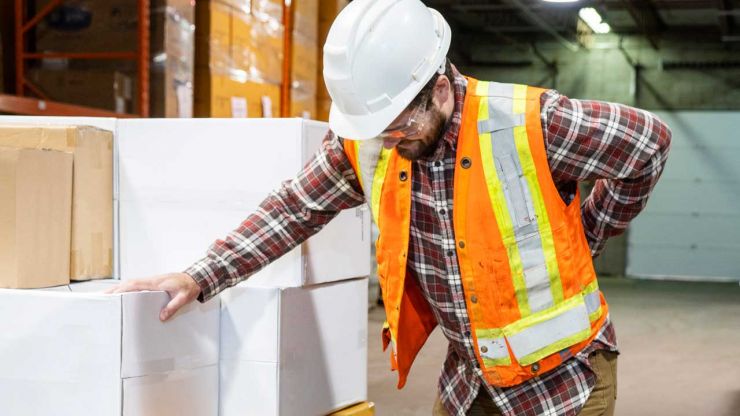Soft Tissue Injuries
Soft tissue injuries affect the non-bony and non-disc portions of the spine. Soft tissues are primarily the muscles, tendons, ligaments, and nerves. Unnecessary stress to the spine can be a contributing factor to injury involving soft spinal structures.

The following numbers are relatively accurate if proper posture and body mechanics are used.
Consider:
- When a person lies flat on the back, zero pressure is exerted on the spine. As the person stands up the pressure climbs three times and while sitting four times!
- When a medium weight box is lifted, the stressful force can rise to five times.
But imagine how those numbers would escalate if improper movements were used!
Consider:
- An example of poor body mechanics is bending at the waist instead of at the knees to pick something light weight up off the floor. This movement may wield as much as 10 times the amount of unnecessary stress to the spine!
Micro-trauma or mini-injuries to soft tissue may result from improper movement, especially when repeated. It is not surprising why so many people suffer from back ache!
Sprains and Strains are part of this category. By definition, both conditions mean something has been stretched beyond its limits. For example, Dave has not shoveled snow since last winter and has decided to take care of his driveway after the first big storm. More than likely, Dave is going to suffer from sore and tender muscles. Why? Because Dave's muscles will be forced to perform beyond what he does on a routine basis.
When muscle becomes strained, the muscle has been forced to exceed its ability to work. Regular exercise can strengthen muscles and allow them to work harder longer, which is important considering muscles are the spine's work horses.
Sprains/strains can occur in a ligament or in a tendon. Ligaments attach bone to bone and tendons attach muscle to bone. A sprained ankle is a common example of a sprained ligament.
The bulk of the back is muscle. If enough force is applied to this soft tissue, injury can occur. This might occur during a motor vehicle accident when the body is suddenly thrown forward, backward, and/or sideways. Such forces can cause muscles, ligaments, and ten dons to tear. When any of these soft tissues are in jured, their respective repair factories switch into high gear to start the healing process.
The symptoms of sprains and strains are sudden, sharp, and persistent pain at the injury site, followed by swelling. Patients may first think a bone has broken.
If medical attention is sought, the attending phy sician will ask the patient several questions about the injury during the physical examination. If indicated, an x-ray will be ordered to rule out any abnormality. The physician may prescribe medication for pain, inflamma tion, and/or spasm during the healing phase. The patient's comfort is paramount.
Fortunately, the body has a great repair process, which quickly carries nutrition to the area. These injuries are usually self-healing in a two to three week period of time. However, recovery may be enhanced with physical therapy accompanied by a stretching pro gram to prevent the formation of scar tissue, which may be debilitating.
Scar tissue is not normal tissue. For example, consider the scars left behind after a severe burn. In most cases, those scars are with the person for life, unless surgically removed.
In the case of muscles, ligaments, and tendons, the scar tissue may be trained by a physical therapist to mimic the function of the original tissue prior to injury. Where a ligament has torn, scar tissue can be used to aid in the healing process.
Muscle Spasms are common. Usually, muscles that have not been conditioned beforehand are not able to handle added demands.
When a muscle is overworked and/or over stretched its response is to go into spasm. The pain produced by spasm can be so severe the patient may think something is seriously wrong. This type of pain can be disabling, even causing deformed posture (i.e. bent to one side).
Whiplash is an intensive hyperextension in jury that could cause micro-trauma to the soft tissue in the neck and/or upper back
A car accident could force the head and neck to rapidly move forward, backward, and/or sideways. The muscles and/or ligaments attaching to the spine may be stretched beyond normal limits. The forceful and sudden action could cause micro-trauma or small tears in the muscles, ligaments, and/or tendons. Symptoms might include pain, burning sensations, and headaches
If the patient is treated by a physician for whip lash, the patient may be given a soft cervical collar to wear, which lifts some of the skull's weight off tender neck and back tissues. The collar serves to immobilize and protect the cervical area during the initial healing stage.
In most cases, whiplash is self-limiting, which means it heals over a four to six week period of time. In some instances, whiplash may cause long lasting prob lems of a nonsurgical nature. In rare cases, whiplash may create a severe disorder requiring surgery.
